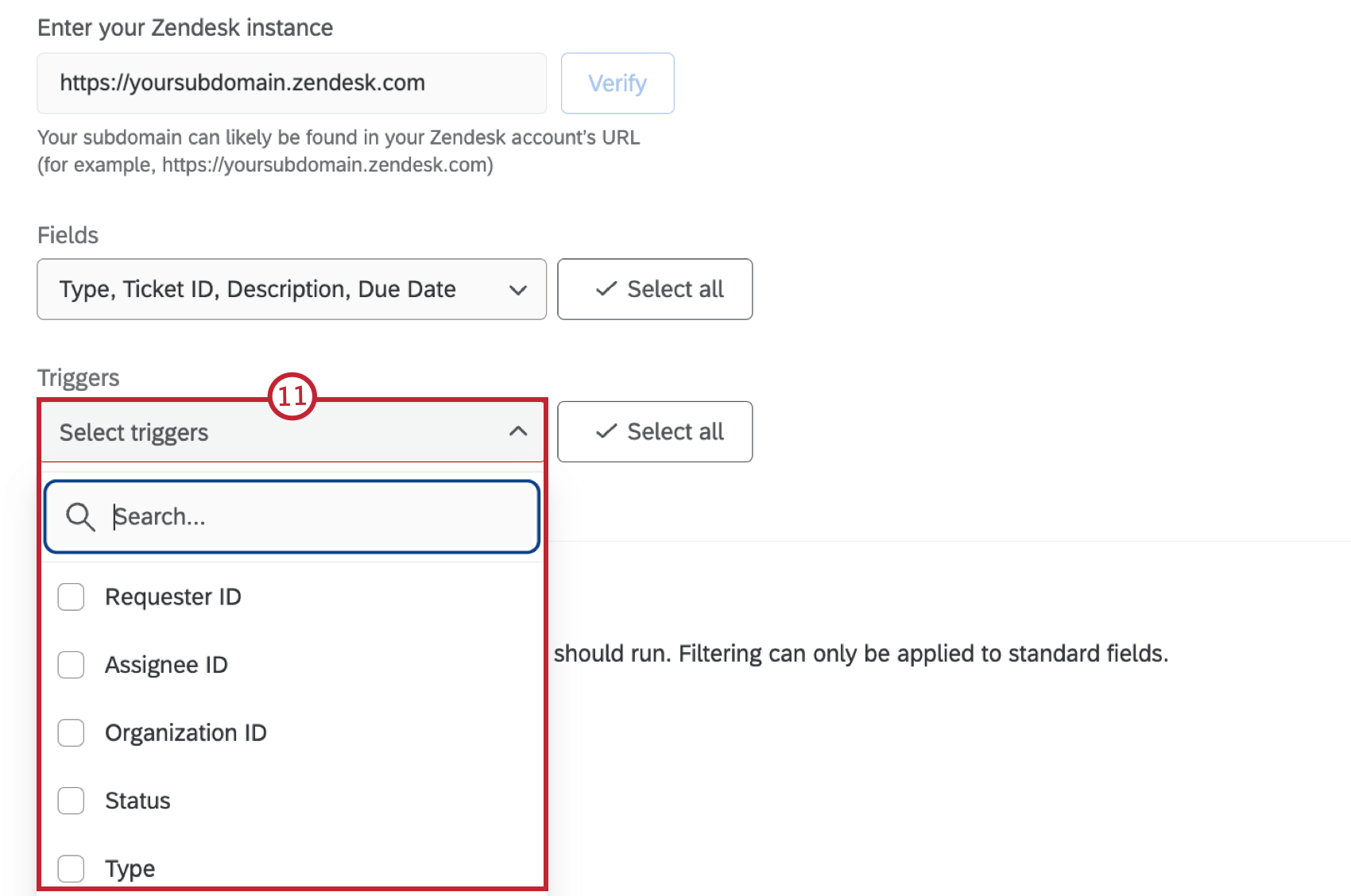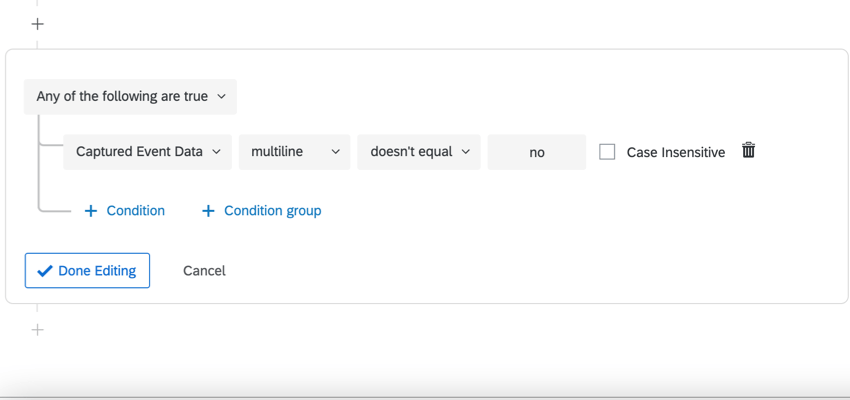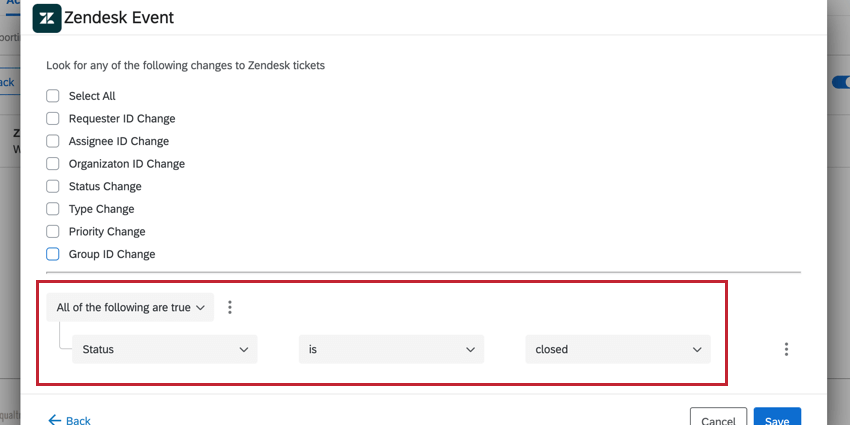Zendesk Event
About Zendesk Events
Zendesk events allow you to begin a workflow in Qualtrics based on events in Zendesk. This includes when a ticket requester or assignee is changed, or when a ticket field is modified. You can then use the data passed from Zendesk in subsequent workflow tasks.
Attention: With Zendesk events, no additional configuration is necessary on the Zendesk side.
Setting up a Zendesk Event
- Navigate to the Workflows tab of a project, or the stand-alone Workflows page.
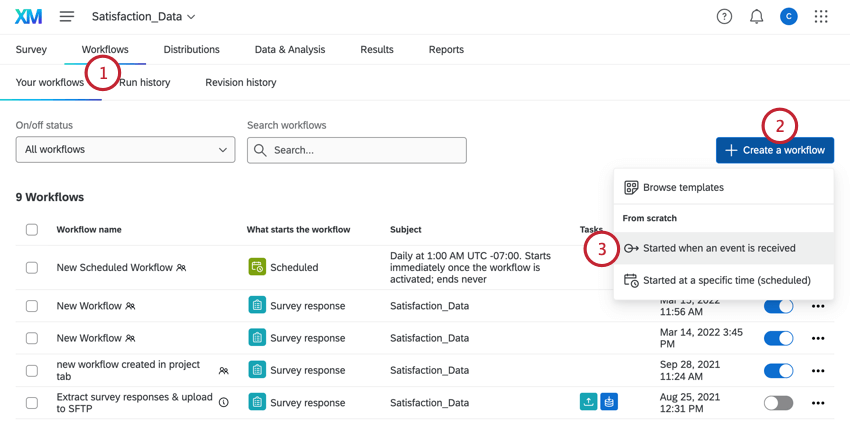
- Click Create a workflow.
- Select Started when an event is received.
- Choose the Zendesk event.
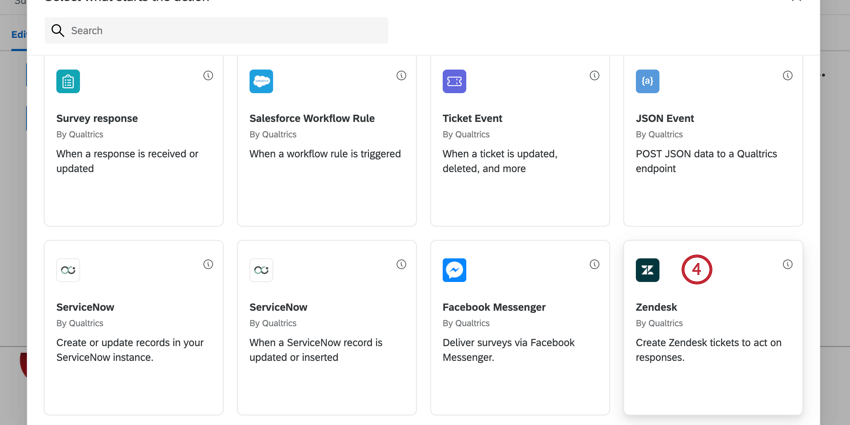
- Choose the Zendesk account to use. Your options include any Zendesk accounts you’ve previously connected to Qualtrics in addition to any brandwide accounts added by your Brand Administrator.
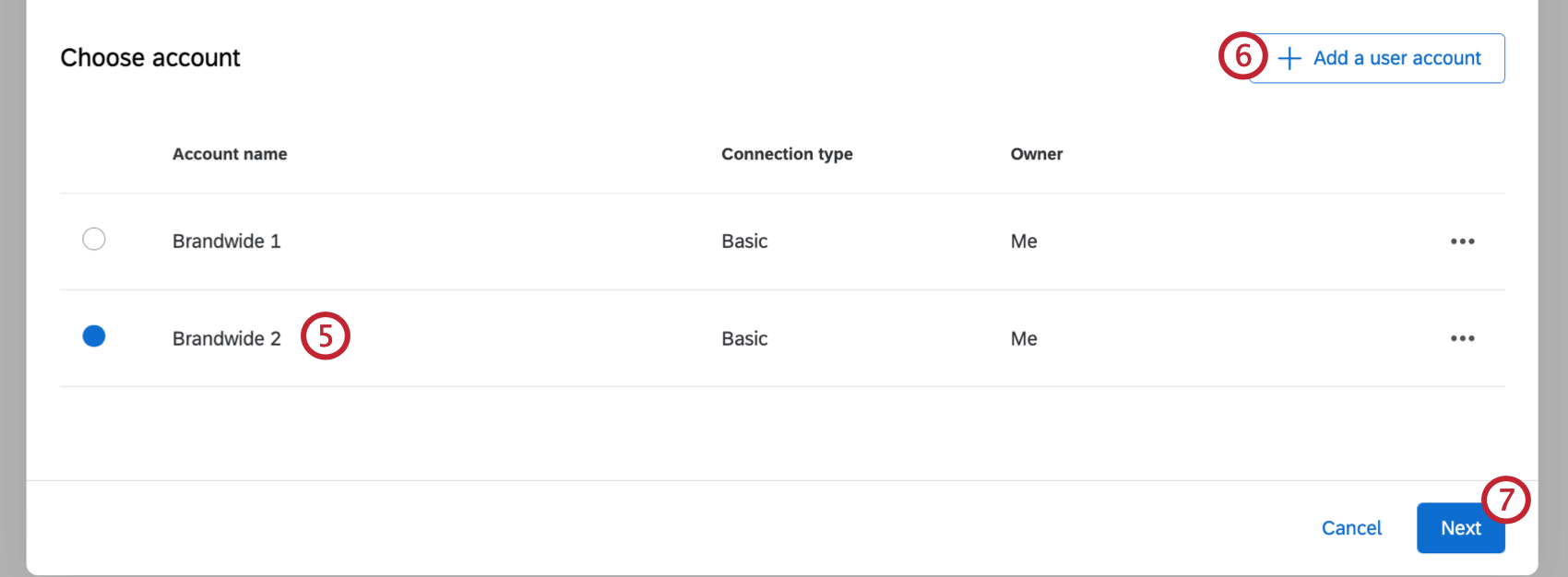
- If you need to add a new Zendesk account, click Add user account.
Qtip: When adding the account, give your account a name and then enter your username and password. The name is for organizational purposes so you can identify the account in your credentials list.
- Click Next.
- Enter your Zendesk subdomain.
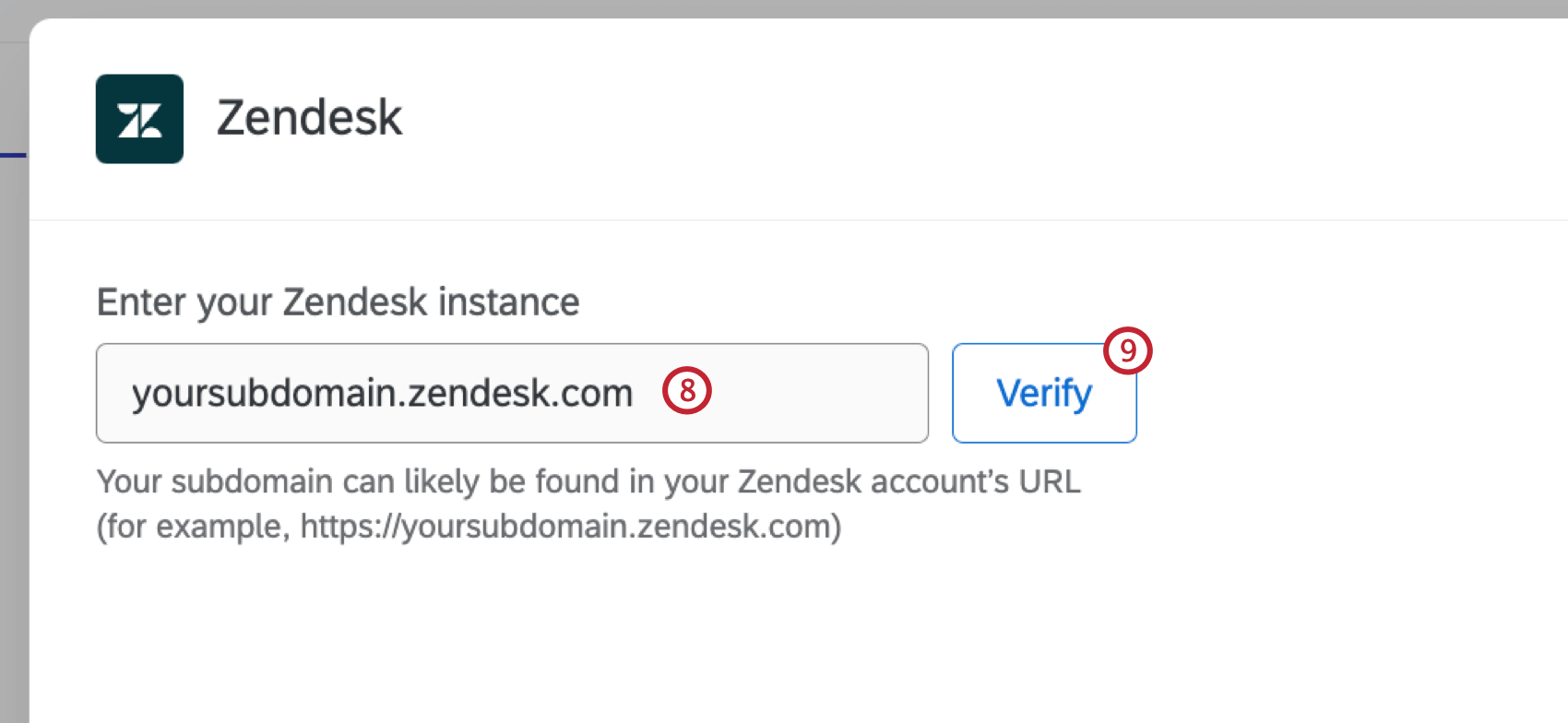
- Click Verify.
- Click Select fields to select the fields that will be passed from Zendesk. These fields can be used in conditions and subsequent workflow tasks. You may choose multiple or Select all.
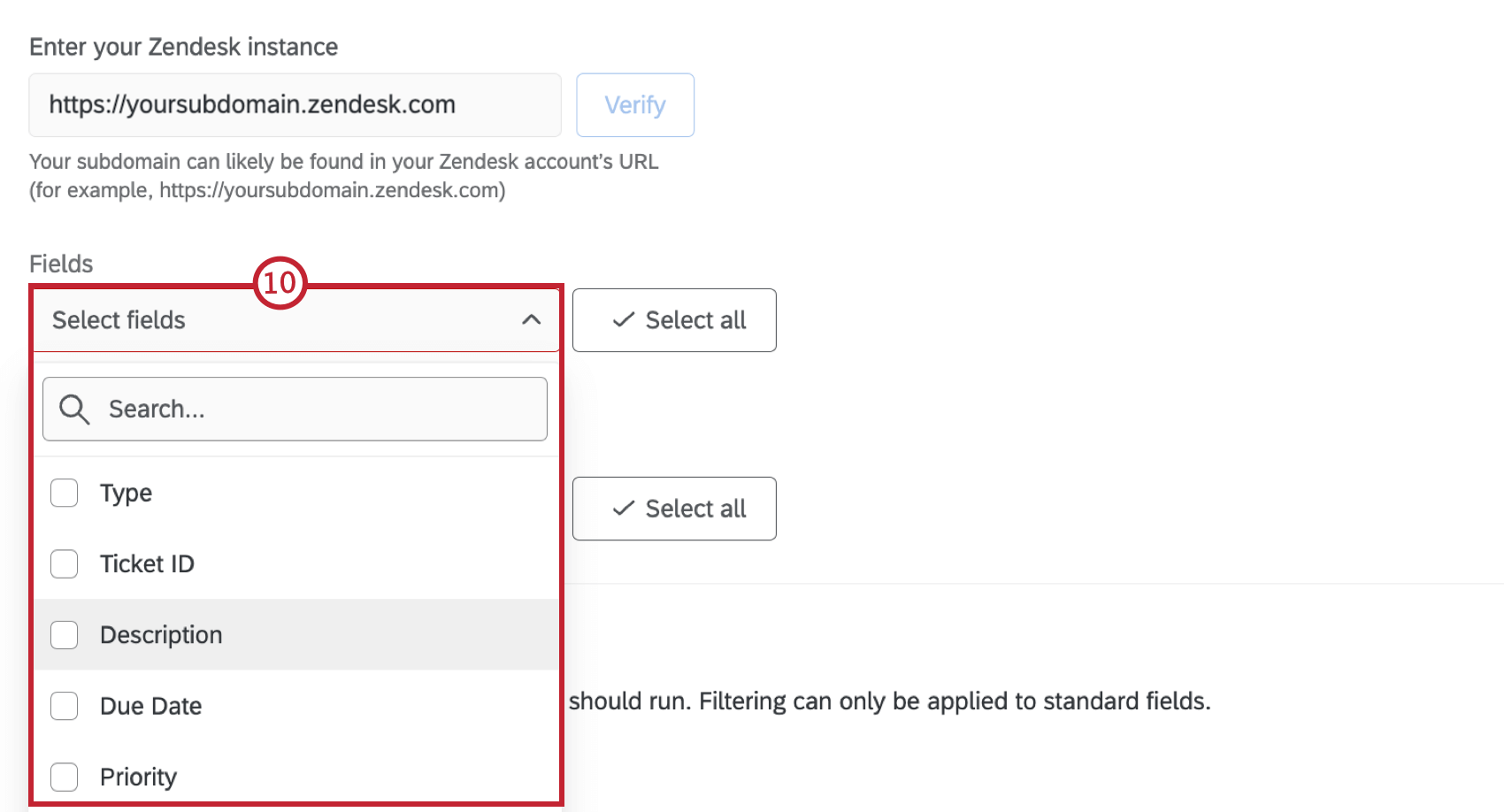 Qtip: You cannot modify the fields that appear here.
Qtip: You cannot modify the fields that appear here. - Click Select triggers to select which ticket events will trigger the workflow. You may choose multiple. Your options include:
- Select All: Selects all of the ticket events.
- Requester ID Change
- Assignee ID Change
- Organization ID Change
- Status Change
- Type Change
- Priority Change
- Group ID Change
- If desired, build conditions for your Zendesk event. These conditions determine the criteria in Zendesk for the event to trigger. See Building Zendesk Conditions for more information.
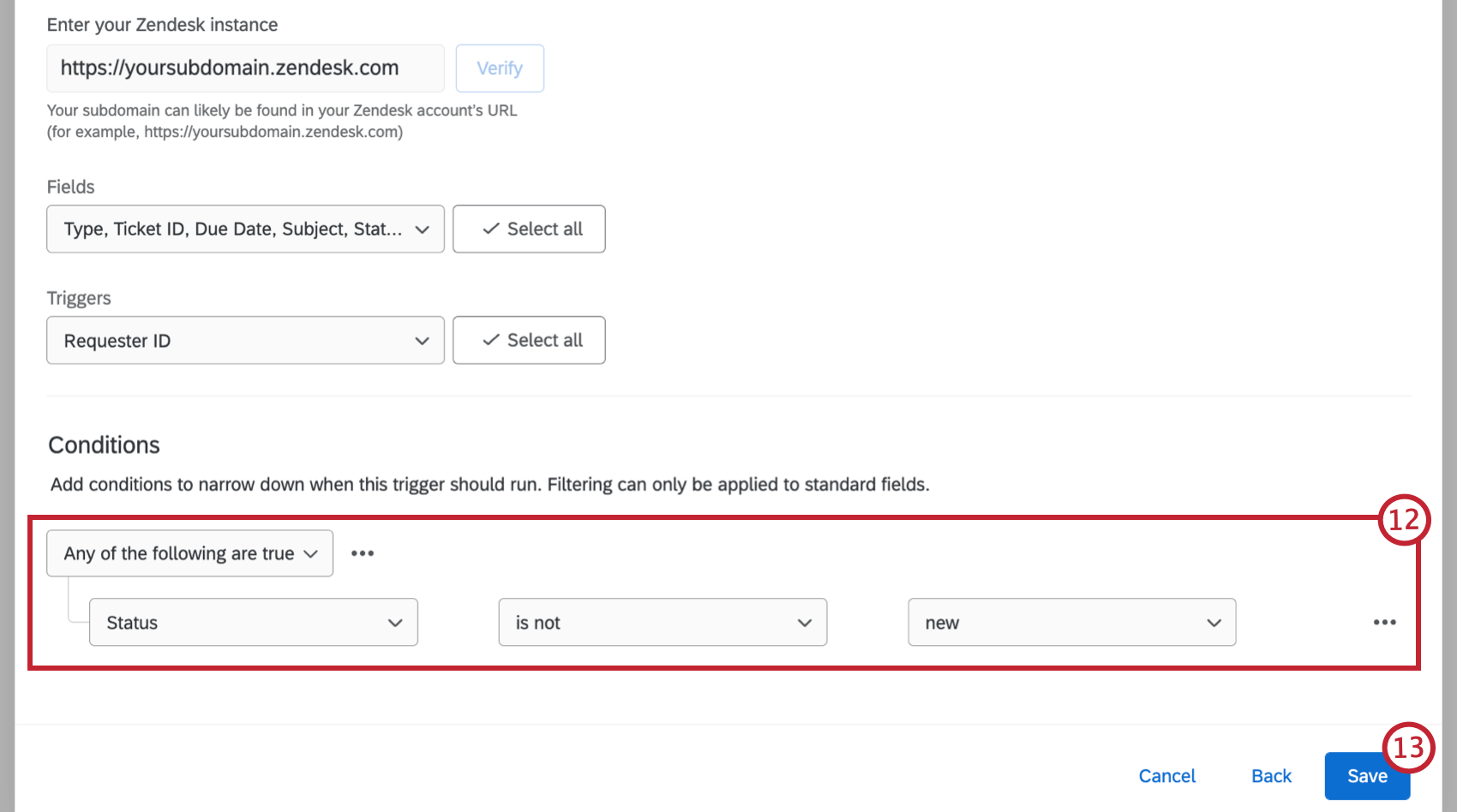 Qtip: These conditions are conditions from Zendesk being set up within the task.
Qtip: These conditions are conditions from Zendesk being set up within the task. - When finished, click Save.
- If desired, click the plus sign ( + ) and then Conditions to add conditions to your workflow.
Qtip: These conditions are separate from the conditions you set up in your event. You may base your conditions here on your previous ticket fields that are listed in step 12.
- Click the plus sign and then Task and choose the task that you want to happen in your workflow. See Defining Tasks for more information.
Building Zendesk Conditions
When setting up your Zendesk event, you can set conditions that determine when the event triggers. These conditions are represent conditions within Zendesk.
Example: Let’s say your Zendesk event is set up to trigger for ticket status changes. However, you don’t want the event to trigger for every ticket status change; you only want it to trigger when the status is changed to closed. You can set up conditions to trigger when “Status” “is” “closed.”
- Choose a Ticket Field for the condition. This is a field from the Zendesk ticket. You may choose one of the following fields:
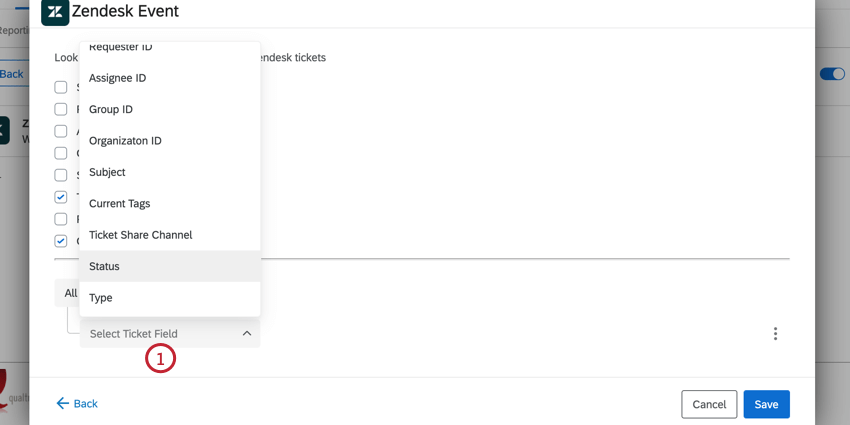
- Requester ID
- Assignee ID
- Group ID
- Organization ID
- Subject
- Current Tags
- Ticket Share Channel
- Status
- Type
- Priority
- Choose the Operator or how the ticket’s value should be evaluated. Your options depend on the field that you selected earlier.
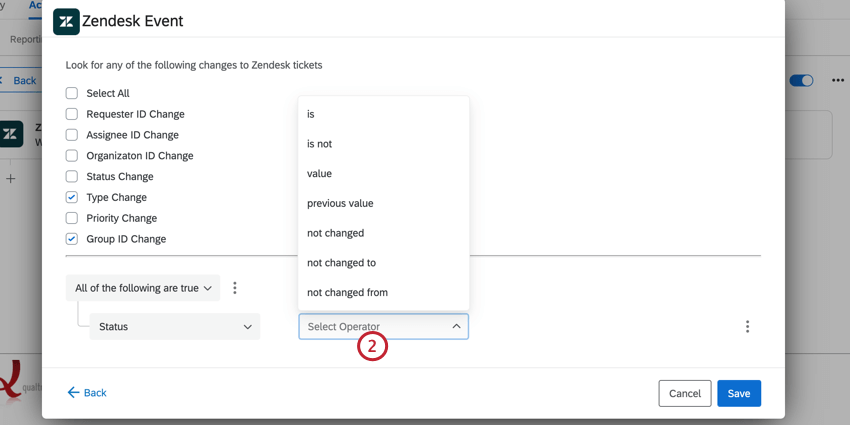 Qtip: The “value” operator corresponds to “changed to” meaning it only looks at the ticket’s new value. For example, if your condition is “status value closed” then the event will trigger if a ticket’s status is changed to closed.
Qtip: The “value” operator corresponds to “changed to” meaning it only looks at the ticket’s new value. For example, if your condition is “status value closed” then the event will trigger if a ticket’s status is changed to closed. - Next, choose the Comparator or the ticket value to be compared against. Your options will depend on both the selected field and operator.
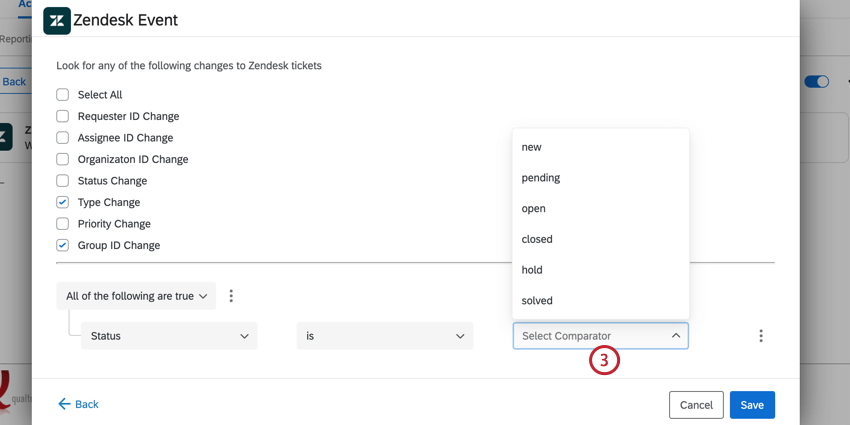
- If needed, you can add multiple conditions to your event for more complex workflows. Click the three dot menu at either the top of the conditions, or to the right of an individual condition. You can then add another condition, or a condition set.
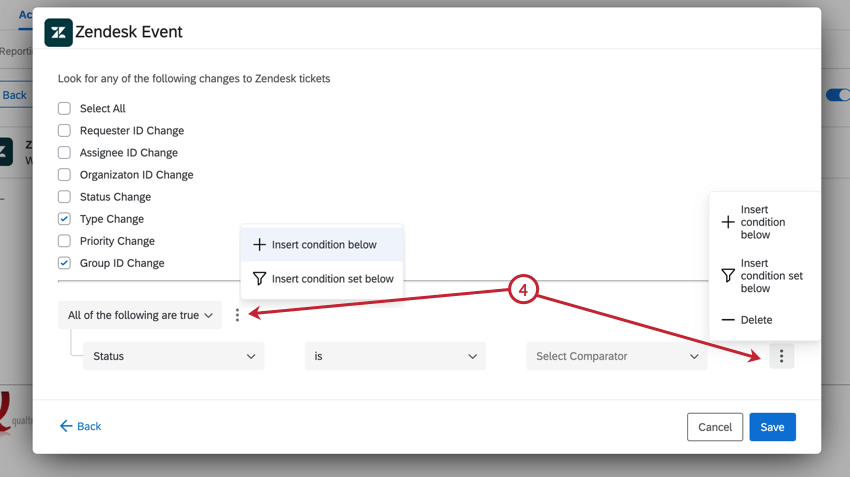
- If you’ve added multiple conditions, you need to determine if All or Any of the conditions need to be true. See All vs. Any for an in-depth explanation.
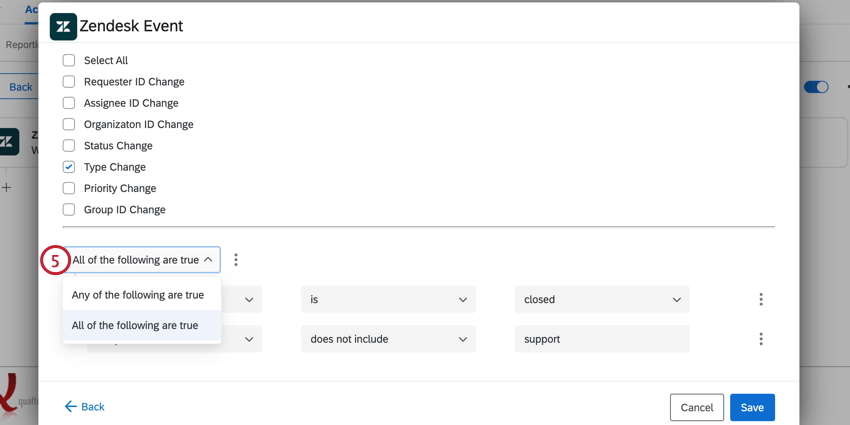 Qtip: If you’ve added condition sets, each condition set will have its own all/any option for you to choose.
Qtip: If you’ve added condition sets, each condition set will have its own all/any option for you to choose.
